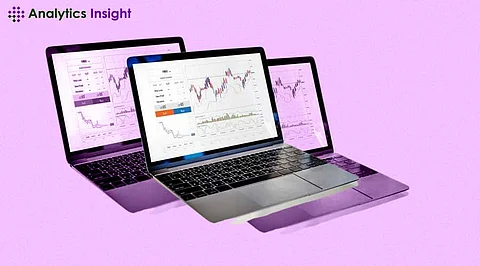

Cryptocurrency trading has become increasingly popular. As a result, traders are now searching for the finest setups to make prompt, data-driven decisions. Having an efficient laptop or PC can significantly help the traders in this process. This article discusses the ways in which Chromebooks can be set up for cryptocurrency trading.
Chromebooks, recognized for their simplicity and security, have limited compatibility with hardware crypto wallets. However, some workarounds allow users to link their wallets and manage their digital assets. Using a virtual machine (VM) is one method of getting around this.
Users can build a virtual environment that runs a different operating system, like Windows or Linux, by installing virtual machine software (VM) such as Parallels or VirtualBox. Users can link their hardware wallet and install a compatible cryptocurrency wallet within the virtual machine.
Making use of a remote desktop connection is another solution. With this technique, users can gain remote access to a computer with an appropriate operating system. Users can communicate with their hardware wallet and use a cryptocurrency wallet that is installed on the remote computer with a connection.
Chromebooks, which are renowned for their ease of use and security, don't work well with cryptocurrency wallets. On these devices, users can access and manage their cryptocurrency holdings with several workarounds.
Using a mobile wallet app on a tablet or smartphone is one workaround. Users can remotely access their cryptocurrency wallets by pairing their mobile device via Bluetooth or USB with the Chromebook. With this approach, managing cryptocurrency is easy and safe without jeopardizing the security of the Chromebook.
Using a web-based cryptocurrency wallet is an additional solution. Users can manage their cryptocurrency holdings directly on their Chromebooks by accessing these wallets using the Chrome browser. It's crucial to remember, though, that web-based wallets might not provide as much protection as hardware or mobile wallets.
Chromebooks have limited compatibility with cryptocurrency wallets. There are several workarounds too for this issue.
Setting up a Linux wallet on a Chromebook is one way. This entails going into Chrome OS settings and turning on the Linux (Beta) functionality. After installing Linux, users can open the terminal and set up an Exodus or Electrum cryptocurrency wallet. Using a hardware wallet, which is a tangible object that holds private keys offline, is an additional workaround. Hardware wallets provide extra protection and are compatible with Chrome OS. However, they cost more than software wallets.
Despite the common perception that Chromebooks are basic, low-powered gadgets, with the appropriate setups, they can be successfully adapted for bitcoin trading. Several solutions allow cryptocurrency traders to effectively handle their digital assets on a Chromebook, ranging from utilizing mobile wallets and Linux installations to connecting hardware wallets via virtual machines or remote desktop connections.
Chromebooks can become effective instruments for navigating the always-changing world of cryptocurrency trading with improved security features, customized apps, and a flexible trading setup. This will provide traders with protection and convenience while they are on the go.
